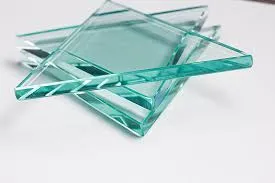The Float Glass Making Process A Comprehensive Overview
The float glass making process is one of the most significant advancements in the glass manufacturing industry, revolutionizing the way glass is produced, particularly for applications in buildings, automobiles, and various other industries. This method offers superior quality, uniform thickness, and clarity, setting a new standard for glass production globally.
1. Raw Materials and Preparation
The journey of float glass begins with raw materials, primarily silica sand, soda ash, and limestone. Silica sand provides the essential SiO2 needed for glass formation, while soda ash (sodium carbonate) acts as a flux, lowering the melting point of the mixture. Limestone adds calcium oxide, which improves the durability of the glass. Other materials such as alumina and various additives may be included to enhance specific properties.
Once the materials are gathered, they are mixed in precise proportions and either dry or wet milled to create a uniform batch. This mixture is then transported to a furnace where it will undergo melting.
2. Melting
The melting process involves heating the raw materials in a furnace at temperatures exceeding 1,700 degrees Celsius (approximately 3,092 degrees Fahrenheit). This high temperature ensures that the raw materials fully melt into a molten glass. Modern furnaces are typically fueled by natural gas, oil, or electricity, with many being designed for high efficiency and low emissions. The molten glass is then refined to remove any bubbles or impurities, resulting in a clear liquid suitable for shaping.
3. The Float Process
float glass making process
The defining characteristic of the float glass making process is the unique method that follows melting the glass is poured onto a molten tin bath. This technique is known as the float method, and it is where the name float glass originates. When the molten glass is poured, it floats on the surface of the molten tin, creating a smooth, flat surface.
This tin bath serves several purposes. Firstly, it allows the glass to achieve a uniform thickness while cooling. Secondly, the tin provides a shiny, reflective surface that ultimately becomes the smooth side of the finished glass. The glass spreads out on the tin bath, ensuring that it maintains a consistent thickness as it cools and solidifies.
4. Annealing
Once the glass has formed and cooled on the tin bath, it enters the annealing lehr. This is a crucial step in the process where the glass is slowly cooled to relieve internal stresses and ensure structural integrity. Cooling the glass at a controlled rate helps prevent cracking and ensures that the glass retains its shape and clarity.
5. Cutting and Finishing
After the annealing process, the glass sheets exit the lehr and are inspected for quality. They are then cut to specified dimensions based on customer or project requirements. Various finishing processes, such as polishing, coating, and laminating, may also be applied, depending on the end-use of the glass. For instance, low-emissivity coatings may be added to improve energy efficiency for building applications.
Conclusion
The float glass making process stands as a testament to modern engineering and manufacturing. It not only allows for the production of high-quality, flat glass but also caters to a diverse range of applications across industries. With continuous advancements in technology, the float glass process is set to evolve further, leading to even better products that meet the needs of a changing world. As demand for glass increases, particularly in sustainable architecture and energy-efficient technologies, the importance of the float glass making process will only continue to grow.
 Afrikaans
Afrikaans  Albanian
Albanian  Amharic
Amharic  Arabic
Arabic  Armenian
Armenian  Azerbaijani
Azerbaijani  Basque
Basque  Belarusian
Belarusian  Bengali
Bengali  Bosnian
Bosnian  Bulgarian
Bulgarian  Catalan
Catalan  Cebuano
Cebuano  Corsican
Corsican  Croatian
Croatian  Czech
Czech  Danish
Danish  Dutch
Dutch  English
English  Esperanto
Esperanto  Estonian
Estonian  Finnish
Finnish  French
French  Frisian
Frisian  Galician
Galician  Georgian
Georgian  German
German  Greek
Greek  Gujarati
Gujarati  Haitian Creole
Haitian Creole  hausa
hausa  hawaiian
hawaiian  Hebrew
Hebrew  Hindi
Hindi  Miao
Miao  Hungarian
Hungarian  Icelandic
Icelandic  igbo
igbo  Indonesian
Indonesian  irish
irish  Italian
Italian  Japanese
Japanese  Javanese
Javanese  Kannada
Kannada  kazakh
kazakh  Khmer
Khmer  Rwandese
Rwandese  Korean
Korean  Kurdish
Kurdish  Kyrgyz
Kyrgyz  Lao
Lao  Latin
Latin  Latvian
Latvian  Lithuanian
Lithuanian  Luxembourgish
Luxembourgish  Macedonian
Macedonian  Malgashi
Malgashi  Malay
Malay  Malayalam
Malayalam  Maltese
Maltese  Maori
Maori  Marathi
Marathi  Mongolian
Mongolian  Myanmar
Myanmar  Nepali
Nepali  Norwegian
Norwegian  Norwegian
Norwegian  Occitan
Occitan  Pashto
Pashto  Persian
Persian  Polish
Polish  Portuguese
Portuguese  Punjabi
Punjabi  Romanian
Romanian  Russian
Russian  Samoan
Samoan  Scottish Gaelic
Scottish Gaelic  Serbian
Serbian  Sesotho
Sesotho  Shona
Shona  Sindhi
Sindhi  Sinhala
Sinhala  Slovak
Slovak  Slovenian
Slovenian  Somali
Somali  Spanish
Spanish  Sundanese
Sundanese  Swahili
Swahili  Swedish
Swedish  Tagalog
Tagalog  Tajik
Tajik  Tamil
Tamil  Tatar
Tatar  Telugu
Telugu  Thai
Thai  Turkish
Turkish  Turkmen
Turkmen  Ukrainian
Ukrainian  Urdu
Urdu  Uighur
Uighur  Uzbek
Uzbek  Vietnamese
Vietnamese  Welsh
Welsh  Bantu
Bantu  Yiddish
Yiddish  Yoruba
Yoruba  Zulu
Zulu 

